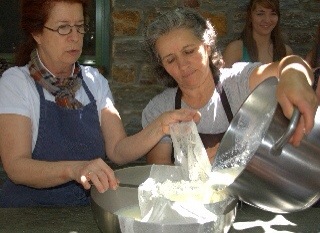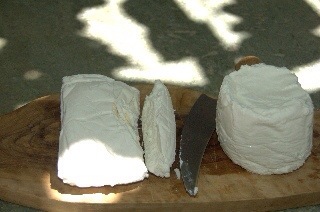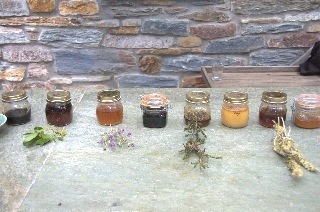My students and I have been traveling through Greece for two weeks now, and the emerging theme of our journey seems to be Myzithra — the soft, creamy cheese made from goat and sheep milk that can be served savory or sweet.
We began by taking the bus from Athens to Port Lavrio. The students were looking forward to their first ferry ride, which I promised would be pleasant as the small craft navigated its way through calm, clear waters under a bright sky to the Cycladic island of Kea, or Tzia as it is locally called.
But before we could unload our bags onto the wharf, a strong southern wind arrived, stirring up heavy gray clouds and an agitated sea. Greeks say the southern wind is a strange wind, unpredictable and portentous. Most of us sat protected from it in the cabin of the ferry, but those suffering from queazy stomachs clung to the railing of the upper deck, ducking as the waves sprayed over the side.
Fortunately, the wind departed as swiftly and unpredictably as it had arrived, leaving us in peace to hike along the island’s many goat trails, swim its coves, visit its ancient temples, and learn to cook its specialities under the guidance of Aglaia Kremezi and her husband Costas Moraitis, who run the cultural cooking program Kea Artisanal from their family home and gardens.
Aglaia taught us how to make a number of savory pies before announcing that next we would learn how to make Myzithra. She came out carrying a large pot by its handles, filled with cow’s milk. Though Myzithra is traditionally made using goat and sheep milk, it was too late in the milking season and Aglaia’s neighbor’s sheep and goats had nothing left to offer. Besides, Aglaia assured us that it was perfectly fine to substitute our own local Wisconsin ingredients for those found on Kea, and instructed us to always remember that cooking is as much art as science.
Aglaia placed the pot on a flame and simmered and stirred, and added this and that, and soon the first Myzithra curds had formed. A few minutes later the cheese was wrapped in cloth suspended from a string over a bowl, straining away.
Myzithra can be served sprinkled with fresh herbs snipped from your outdoor or window sill garden, or drizzled with honey. At Aglaia and Costas’ table, we had the pleasure of tasting a variety of honey produced by bees that had pollinated thyme, sage, arbutus, chestnut, carob and a number of other flowers. The honey ranged in color from pale gold, to warm amber, to deep chocolate, and in flavor from mild and sweet, to bitter and bold.
To make about 1 pound Myzithra, Aglaia says you will need:
2.5 quarts full fat milk (a mixture of goat and sheep milk is preferable, but cow milk works just fine)
3/4 cup heavy cream
6 tablespoons freshly squeezed lemon juice
pinch of salt
Place a colander lined with two layers of cheese cloth over a deep bowl.
Place the milk in a pot and bring it to a boil over medium heat for 8 to 10 minutes, stirring often. Let it cool to about 158 degrees Fahrenheit. Add the lemon juice, cream, and pinch of salt, and stir over medium-low heat. When the milk starts to form tiny clots, after about 20 minutes, stop stirring. Raise the heat to medium high and continue cooking for about 8 to 10 minutes, until the temperature reaches about 199 degrees Fahrenheit. The curds will be large and creamy. Lower heat and simmer for 8 to 10 more minutes, without stirring.
With a slotted spoon, transfer the curds to the lined colander. Allow the cheese to drain for 15 to 30 minutes. You can transfer the curds to a small basket to give it form, or a bowl. Cover and refrigerate. It keeps for 2-4 days.
More of Aglaia’s recipes can be found in her many English-language cookbooks, including her most recent “Mediterranean Vegetarian Feasts.” You can also visit her blog, Aglaia’s Table.









